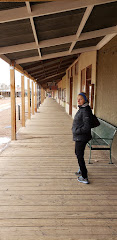Wearing of the green
On St Patrick's Day it is customary to wear shamrocks and/or green clothing or accessories (the "wearing of the green"). St Patrick is said to have used the shamrock, a three-leaved plant, to explain the Holy Trinity to the pagan Irish: The Father, The Son and the Holy Ghost. This story first appears in writing in 1726, though it may be older.
The colour green has been associated with Ireland since at least the 1640s, when the green harp flag was used by the Irish Catholic Confederation. Green ribbons and shamrocks have been worn on St Patrick's Day since at least the 1680s. The Friendly Brothers of St Patrick, an Irish fraternity founded in about 1750, adopted green as its color. However, when the Order of St. Patrick—an Anglo-Irish chivalric order—was founded in 1783 it adopted blue as its colour, which led to blue being associated with St Patrick. During the 1790s, green would become associated with Irish nationalism, due to its use by the United Irishmen. This was a republican organisation—led mostly by Protestants but with many Catholic members—who launched a rebellion in 1798 against British rule. The phrase "wearing of the green" comes from a song of the same name, which laments United Irishmen supporters being persecuted for wearing green. Throughout the 19th and 20th centuries, the colour green and its association with St Patrick's Day grew.
From House Logic:
1. Change
the locks. You really don’t know who else has keys to your
home, so change the locks. That ensures you’re the only person who has access.
Install new deadbolts yourself for as little as $10 per lock, or call a
locksmith — if you supply the new locks, they typically charge about $20-$30
per lock for labor.
2.
Check for plumbing leaks. Your home inspector should do this for you before
closing, but it never hurts to double-check. I didn’t have any leaks to fix,
but when checking my kitchen sink, I did discover the sink sprayer was broken.
I replaced it for under $20.
Keep an eye out for dripping faucets and running
toilets, and check your water
heater for signs of a leak.
Here’s a neat trick: Check your water meter at
the beginning and end of a two-hour window in which no water is being used in
your house. If the reading is different, you have a leak.
3. Steam clean carpets. Do this before you move your furniture in, and
your new home life will be off to a fresh start. You can pay a professional
carpet cleaning service — you’ll pay about $50 per room; most services require
a minimum of about $100 before they’ll come out — or you can rent a steam
cleaner for about $30 per day and do the work yourself. I was able to save some
money by borrowing a steam cleaner from a friend.
4. Wipe out your
cabinets. Another no-brainer before you move in your dishes
and bathroom supplies. Make sure to wipe inside and out, preferably with a non-toxic
cleaner, and replace contact paper if necessary.
When I cleaned my kitchen cabinets, I found an unpleasant surprise: Mouse poop. Which leads me to
my next tip
5. Give critters the heave-ho. That includes mice, rats, bats, termites, roaches, and any other
uninvited guests. There are any number of DIY ways to get rid of pests, but if
you need to bring out the big guns, an initial visit from a pest removal
service will run you $100-$300, followed by monthly or quarterly visits at
about $50 each time.
For my mousy
enemies, I strategically placed poison packets around the kitchen, and I
haven’t found any carcasses or any more poop, so the droppings I found must
have been old. I might owe a debt of gratitude to the snake that lives under my back
deck, but I prefer not to think about him.









































































































































